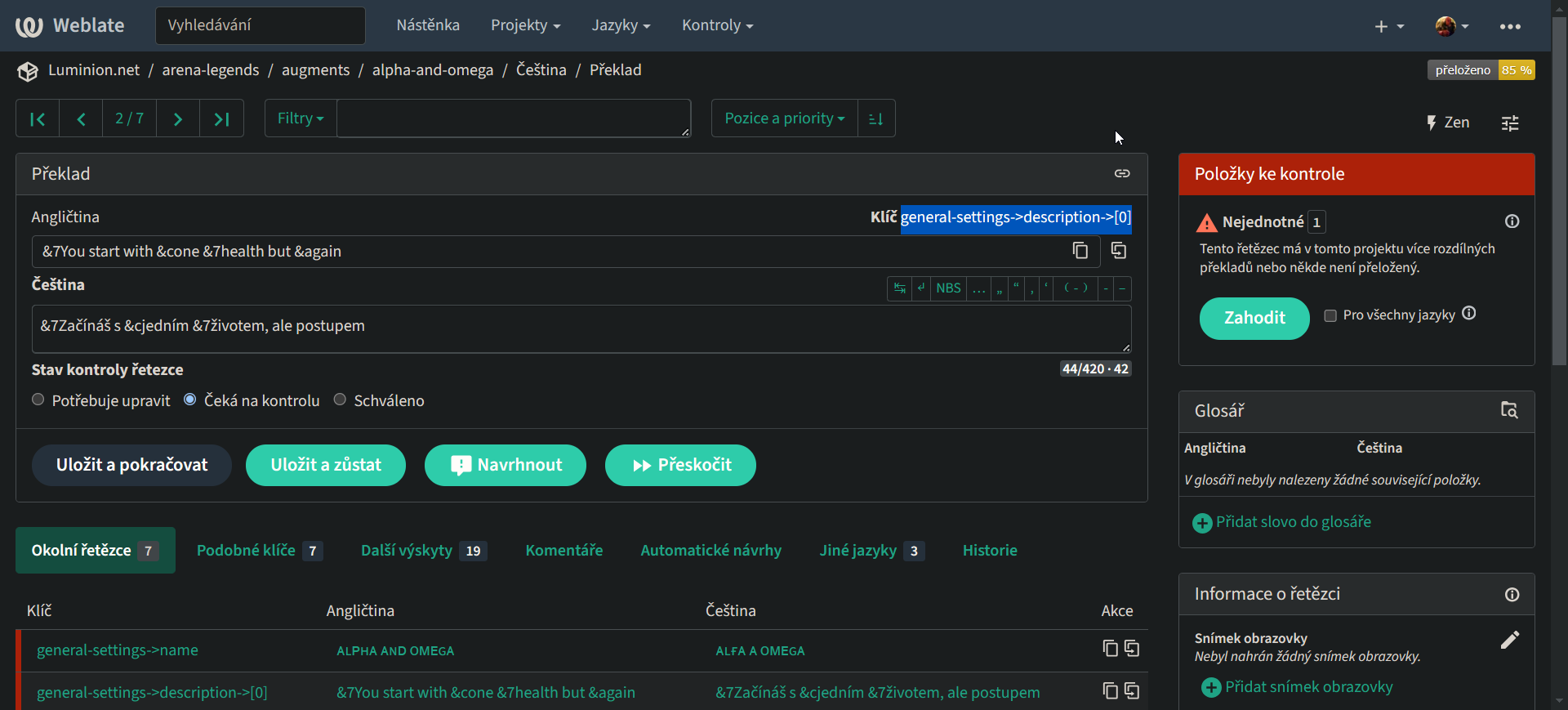This issue has been put aside. It is currently unclear if it will ever be implemented as it seems to cover too narrow of a use case or doesn't seem to fit into Weblate.
Please try to clarify the use case or consider proposing something more generic to make it useful to more users.
Describe the problem
Currently, string lists are edited each node as a separate entity with its own translation key (such as
general-settings->description->[0]). That means each string node in string list has to be edited separately. Which for translating multiline messages that are saved in this format (for example lores for GUI items in a Minecraft plugin) means every single line has to be edited separately.Describe the solution you would like
Replace single string entity (such as
general-settings->description->[0]) with a multi string entity, if the source language file contains that translation in the string array format (so key will only begeneral-settings->description, and all array items will be on the same page). Either have multiple inputs per array item (with a function to add or remove lines as applicable), or have one multiline input for the entire array, and treating each line as its own array item (which honestly would be much better and quicker for editing). Array translation nodes could be noted with an icon next to the translation key.Describe alternatives you have considered
No response
Screenshots
Translation key and translation interface:
Surrounding translations:
Additional context
I translate mostly from English to Czech (and vice versa), which means that multiline translations often don't match exactly, and the resulting translation may be longer or shorter than the source language item. That leaves two options: either add or remove lines as needed, or shrink or expand the column width as needed. Currently only the latter is applicable in Weblate, as I can't add or remove lines, they're fixed to the amount used by source, which makes it quite annoying to work with when the resulting translation is shorter or longer than source. Also, for example the lore line in Minecraft is limited to certain amount of characters before it starts wrapping around, which means I can't expand the line width indefinitely, and certainly can't shrink it indefinitely (to the point where there is just 1 word per line). Having this proposed ability would greatly improve the translations quality.